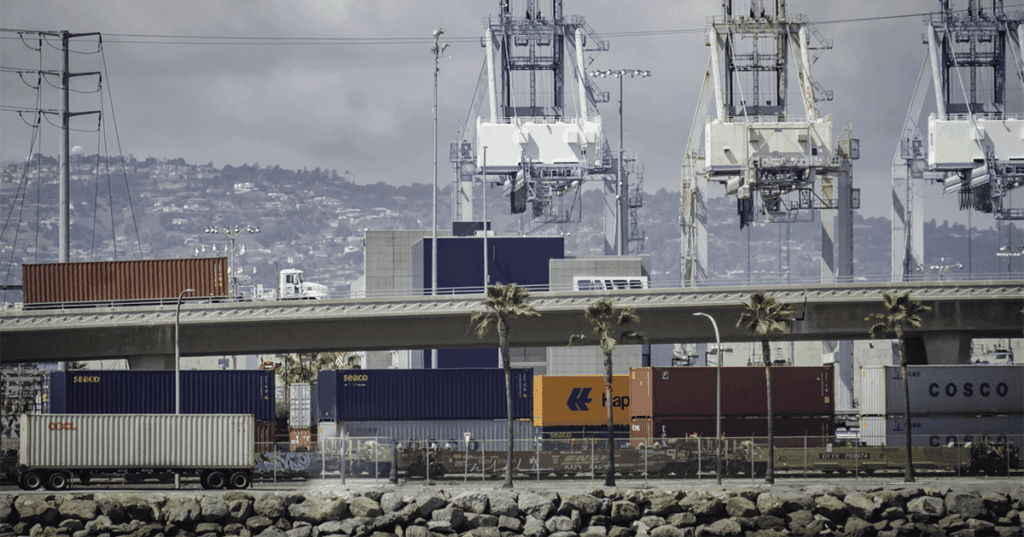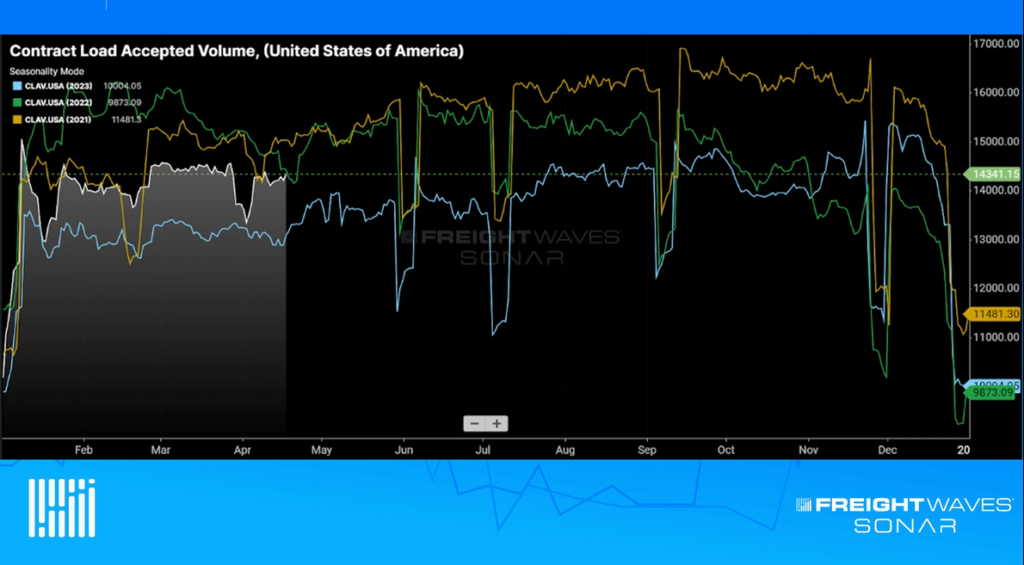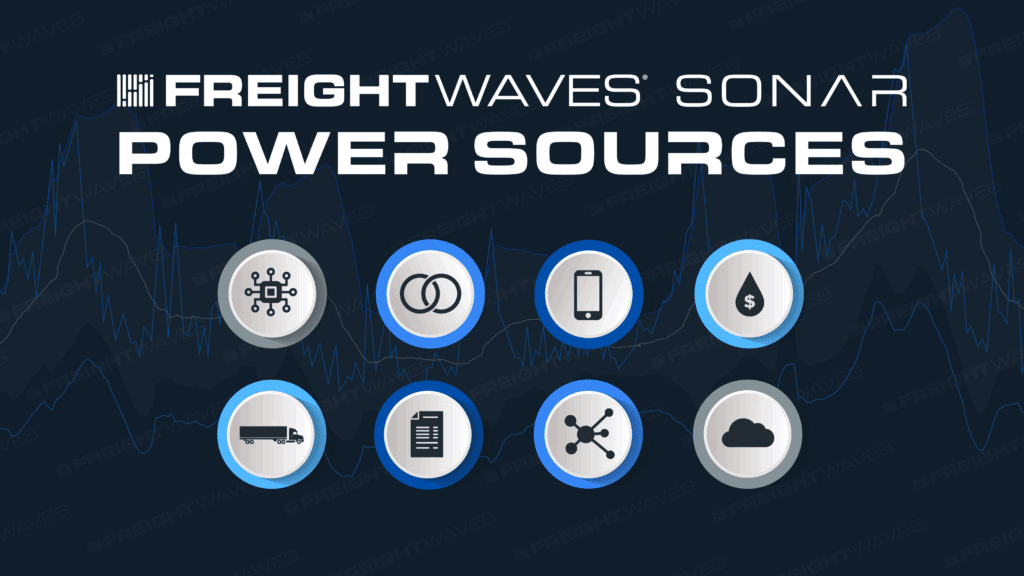Freight Forecasting host Michael Vincent’s guests are Greg Miller, FreightWaves’ Senior Editor for Maritime, and Zach Strickland, Director or Freight Intelligence at FreightWaves. The three colleagues talk about the effects of maritime markets on the U.S. surface transportation markets.
Watch the episode below:
Using SONAR’s maritime and international trade data sets, subscribers can forecast future demands on all modes of surface transportation from the port of entry to inland destinations. Subscribers can learn at which ports ocean freight is increasing or decreasing. This information can help shippers, brokers and carriers forecast and plan more accurately.
SONAR has billions of data points and can provide information from the local to the global level. However, most imports to the U.S. come by ship to key ports on the West Coast, East Coast and the Gulf Coast. Understanding how to use import data from U.S. Customs and Border Protection, where and when cargo ships are docking, how the cargo is moved from the port and to where, and more will help you better understand the world of freight, whether you are a shipper, carrier, broker, freight forwarder or analyst.
Know more, faster – and find just what you need with SONAR! Interested in a SONAR demo?












